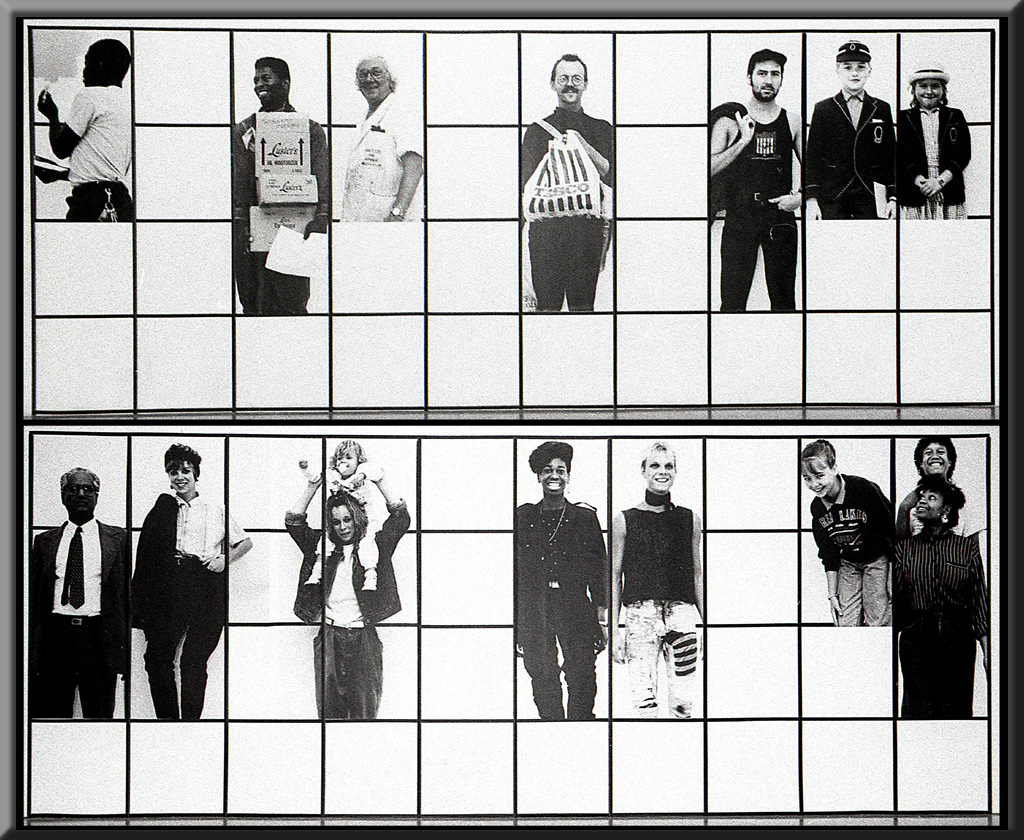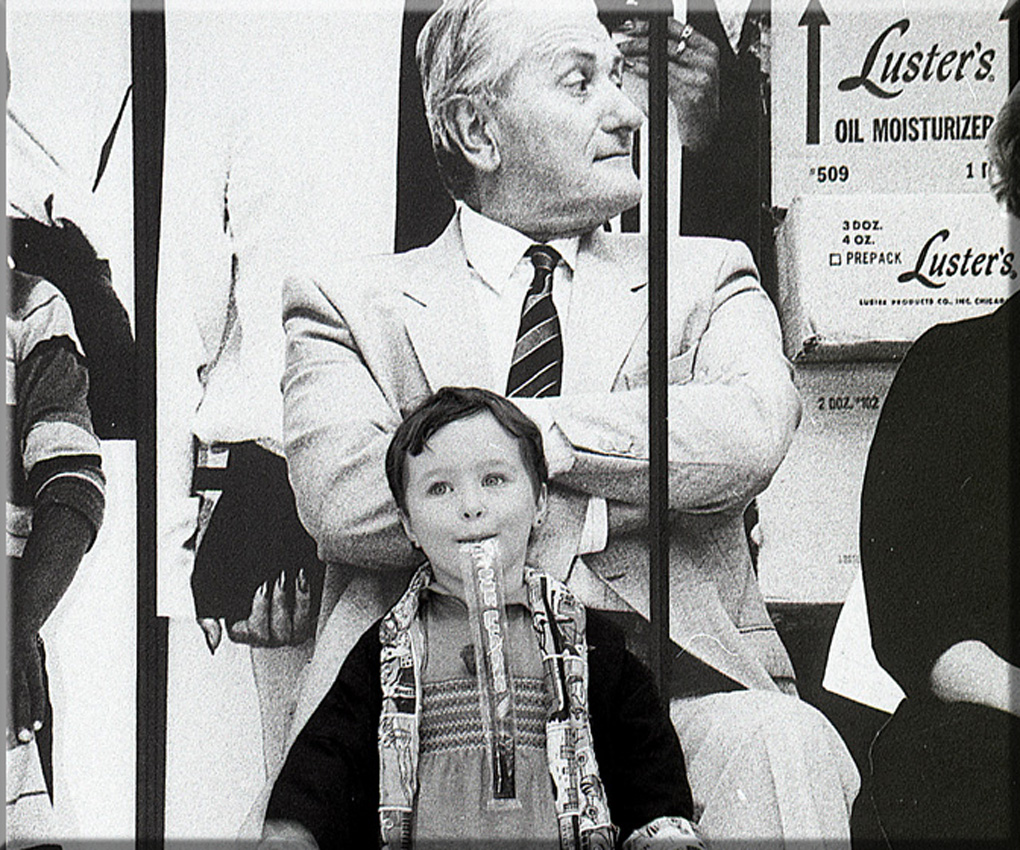Elephant and Castle Photomurals
1987
This piece was commissioned by the Elephant and Castle Shopping Centre in London. It developed from the Serpentine Gallery installation, in which the images of passers-by were stolen without their knowledge in order to create a virtual crowd of people. This work, in contrast, set out to engage the local community, by asking them to participate in what progressively became two very large group photographs.
The sites, 2m high and 5m wide, faced each other across a large pedestrian walkway. Local people were asked to pose in front of the gridded backgrounds and selected life-size prints were fixed to the walls. Further shots were taken and the prints were applied next to and on top of the original prints. The sequences continued, progressively creating two large groups, of whom no more than two people ever actually posed at the same time.
The finished images represented two teams, which were both “united” and “all-stars”. As well as representing the best of the local community, the murals also play visual games. They show stages in their own construction (painting the wall and fitting the photo panels). Some people are not what they seem – holding other peoples’ bodies or heads in front of their own. Each group also contains the photographer caught in the act of recording the opposite team. Someone in each group also holds a giant photograph of the opposite team, showing someone holding a giant photograph of the opposite team, showing someone holding…….
Elephant and Castle Photomurals
1987
This piece was commissioned by the Elephant and Castle Shopping Centre in London.
It developed from the Serpentine Gallery installation, in which the images of passers-by were stolen without their knowledge in order to create a virtual crowd of people. This work, in contrast, set out to engage the local community, by asking them to participate in what progressively became two very large group photographs.
The sites, 2m high and 5m wide, faced each other across a large pedestrian walkway. Local people were asked to pose in front of the gridded backgrounds and selected life-size prints were fixed to the walls. Further shots were taken and the prints were applied next to and on top of the original prints. The sequences continued, progressively creating two large groups, of whom no more than two people ever actually posed at the same time.
The finished images represented two teams, which were both “united” and “all-stars”. As well as representing the best of the local community, the murals also play visual games. They show stages in their own construction (painting the wall and fitting the photo panels). Some people are not what they seem – holding other peoples’ bodies or heads in front of their own. Each group also contains the photographer caught in the act of recording the opposite team. Someone in each group also holds a giant photograph of the opposite team, showing someone holding a giant photograph of the opposite team, showing someone holding…….














